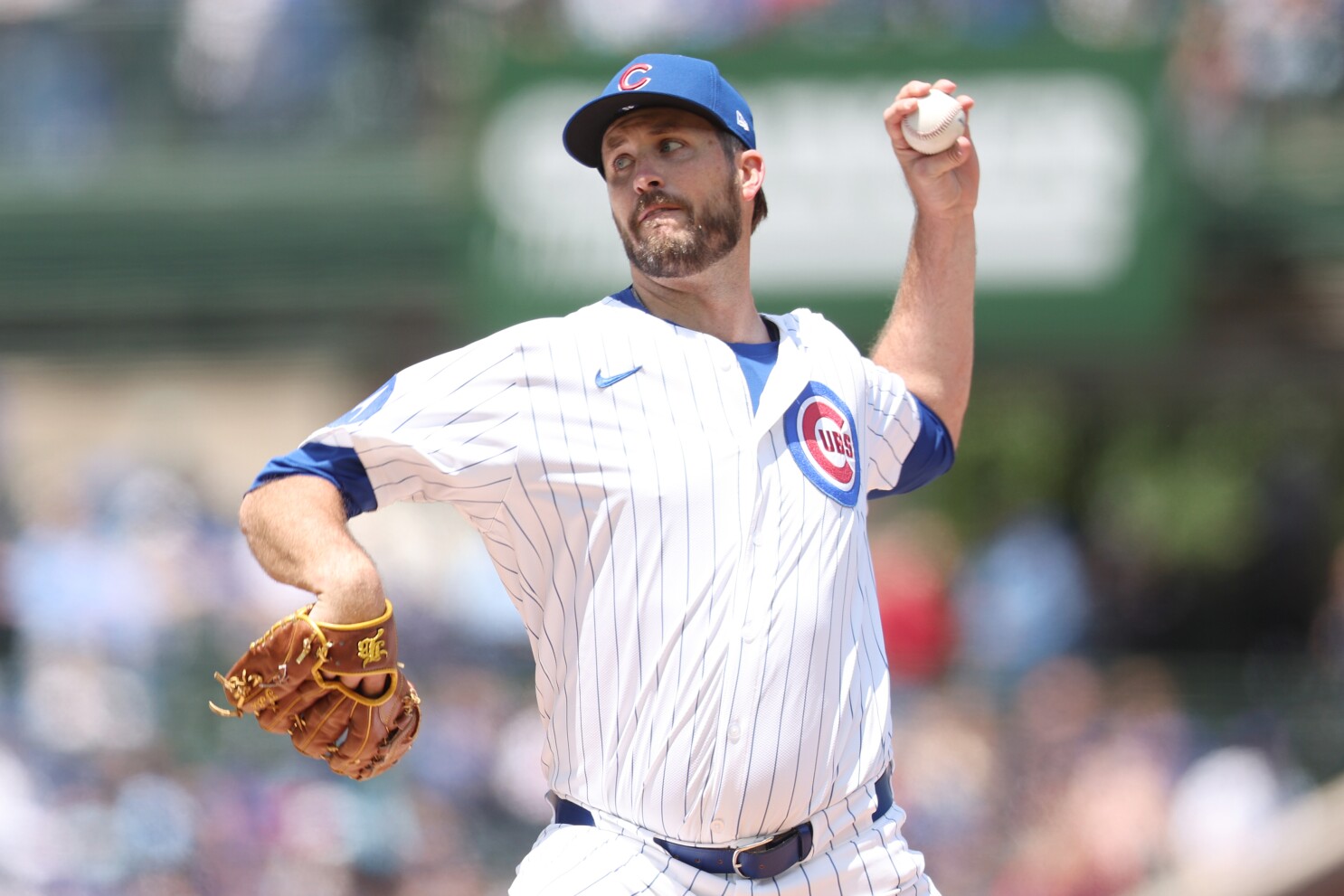The Cubs told their left-handed relievers going into Washington this week that it would be a big series for them. Really, that would be the case for the whole road trip, against the Nationals, Tigers and Phillies.

The Cubs set up their roster for this stretch against teams robust with left-handed bats, signing Génesis Cabrera last week after the Mets designated him for assignment. He gave the Cubs a third left-handed option out of the bullpen, joining Caleb Thielbar and Drew Pomeranz, all of whom are throwing well.
That depth gave the Cubs the flexibility to throw an opener Thursday, against a left-handed heavy Nationals lineup, pitching Pomeranz before right-hander Colin Rea.
“Mostly a function of just their lineup,” manager Craig Counsell said of the decision. “This is a very unique lineup configuration. They’ve got a bunch of left-handed hitters. The guys at the top of the lineup are really tough outs, frankly, no matter who’s pitching, but just think it’s better for a left-hander.”
Pomeranz faced the minimum in the first inning before Rea took over.
In general, the philosophy behind the opener is that the next pitcher can get deeper into the game before facing the top of the lineup for a second and third time.
Rea had struggled his previous two starts, to the tune of six runs allowed in each, with most of the damage coming in the first and last inning he pitched.
Thursday marked the third time this season that the Cubs have used an opener before a regular starter.
In Cade Horton’s debut last month, Brad Keller took the ball for an inning against the Mets, retiring Francisco Lindor, Juan Soto and Pete Alonso before Horton threw four innings.
Last week when Ben Brown’s turn came up against the Reds, facing that team for the second time in a row, Pomeranz threw a perfect first inning before handing it over to Brown.
Both instances worked as intended. The only runs Horton allowed, with a tough matchup in his introduction to the majors, came on a three-run home run by Brett Baty. To cap his outing, he struck out Soto and got Alonso to line out.
Brown had his best appearance of the season, limiting the Reds to one hit in six scoreless innings.
While Horton’s case came under unique circumstances, Brown and Rea have experience both starting and coming out of the bullpen.
“Sometimes just taking out that, ‘I’m a starter, I need to do X, Y, Z for the team,’” Hottovy said, “you go from [that to] “Alright, I’m not starting, I’m going to come in the game and I’m just going to go attack for as long as they leave me in.’”
The setup can also have an advantage for the opener.
“Guys that are feeling things throughout the year, maybe you’re a little tender or a little sore,” Hottovy said, “the opener is an actually real easy way to let you pitch in the game and test it in an environment where you can control it before the game.”
That was somewhat the case for Pomeranz last week, Hottovy told the Sun-Times. He was working through “a little bit of tightness,” but Hottovy characterized it as nothing out of the ordinary.
As the opener, Pomeranz could go through a routine with a gradual build, rather than starting and stopping like a reliever does before and during a game.
Pomeranz has posted an unblemished 0.00 ERA for the Cubs in 16 appearances, since they took advantage of the upward mobility clause in his contract that forced the Mariners to offer him up for a trade in late April.
With Brown’s turn in the rotation up Friday, as the Cubs open a three-game series against the Tigers, the Cubs listed the starter as “TBD.”


-1750902626-q80.webp)
